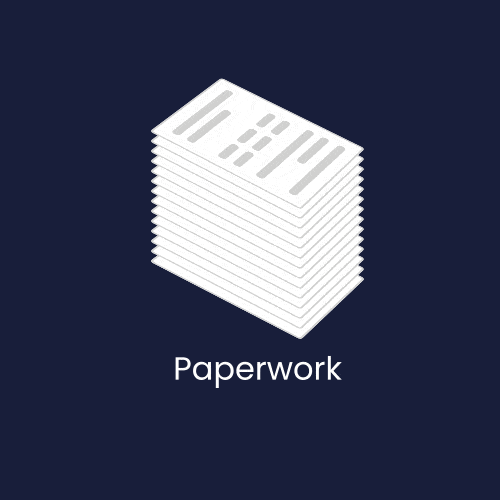A supply chain’s transportation and logistics operations can be managed more effectively and efficiently with the use of a transportation management system (TMS), a software program. The movement of commodities from the place of origin to the final destination can be planned, carried out, and optimized with the use of TMS.
The last portion of a product’s trip from a warehouse or distribution center to its destination—typically the location of the ultimate customer—is referred to as the “last mile delivery” in logistics. The reason it is referred to as the “last mile” is that it is the last leg of the supply chain, traveling the distance between the transportation hub and the ultimate destination.
Challenges and Importance of Optimizing Last Mile Delivery
In the quickly changing world of e-commerce and retail, optimizing last-mile delivery—the last link in the supply chain that transports goods from a distribution center to the final consumer—presents a number of difficulties. The following obstacles must be overcome, and last-mile delivery optimization is crucial:
Costs:
Because of things like fuel, labor, and vehicle upkeep, last-mile delivery is sometimes the most costly segment of the supply chain.
Traffic and Congestion:
Traffic congestion frequently occurs in urban areas, where there are a lot of deliveries. This causes delays and higher operating costs.
Customer Expectations:
Consumers are placing pressure on businesses to match their expectations by expecting delivery alternatives that are quick, dependable, and convenient.
Environmental Impact:
Eco-friendly and sustainable last-mile solutions are necessary because traditional delivery techniques increase pollution and carbon emissions.
Addressing the Last-Mile Problem:
It can be costly and logistically difficult to deliver goods to isolated or difficult-to-reach places.
Technology Integration:
Route optimization and real-time tracking are examples of new technology that can be difficult to adopt and adapt.
Returns Management:
One of the biggest challenges in last-mile logistics is handling returns both economically and efficiently.
Importance:
Customer Satisfaction:
Customer satisfaction is directly impacted by the last-mile delivery experience. Positive client experiences are enhanced by delivery that are accurate, timely, and dependable.
Competitive Advantage:
In a market where convenience plays a big role, businesses who can provide effective last-mile delivery get a competitive edge and draw in more clients.
Cost Efficiency:
By lowering operating expenses, final-mile delivery optimization increases a company’s total profitability.
Brand Image:
A satisfying last-mile delivery experience enhances brand perception and encourages repeat business and consumer loyalty.
Market Expansion:
By using effective final-mile delivery, companies may reach consumers in underserved areas and broaden their market reach.
Real-Time Visibility:
Enterprises may enhance customer communication and experience by providing precise delivery estimates by leveraging real-time tracking and visibility solutions.
Sustainability:
In addition to lowering carbon footprint, using ecologically friendly last-mile options also complies with customer demands for sustainable operations.
Data Utilization:
Analyzing data gathered from last-mile delivery can help pinpoint opportunities for supply chain optimization and increase overall efficiency.
Overview of Transportation Management Systems (TMS)
Supply chain logistics are planned, carried out, and monitored more efficiently and effectively with the use of Transportation Management Systems (TMS), which are software programs. In order to carry commodities from point of origin to point of destination in an economical and efficient manner, they are essential. The following is a summary of important Transportation Management Systems-related factors:
Functionality:
Order Management:
Transportation orders are created, modified, and consolidated using TMS.
Routing and Scheduling:
Schedules and routes are optimized to guarantee efficient and timely delivery.
Carrier Management:
Overseas carrier connections, including rate negotiations and selection.
Shipment Visibility:
Offers the ability to track shipments in real time and view their status.
Key Features of TMS:
Route Optimization:
Finds the most cost-effective routes to increase delivery times and decrease transportation expenses.
Load Planning:
Maximizes space usage and lowers shipping costs through optimized freight loading.
Rate Management:
Oversees and bargains with carriers for freight rates in an effort to reduce costs.
Performance Analytics:
Enables the assessment and enhancement of transportation performance through data and analytics.
About nuVizz:
nuVizz emerges as a key player in the realm of last-mile delivery optimization through its robust Transportation Management System (TMS). One unique and efficient option for optimizing last-mile delivery is nuVizz’s TMS. Its unique blend of cutting-edge technology, flexibility, and affordability makes it an invaluable resource for businesses attempting to meet the demands of contemporary logistics. For companies looking to thrive in the dynamic field of transportation management, nuVizz’s TMS is a wise strategic option as the need for effective and customer-focused last-mile delivery solutions keeps rising.
Conclusion:
A TMS-based strategy for optimizing last-mile delivery can revolutionize the way organizations compete in the quickly changing logistics industry. The advantages go beyond simple operational effectiveness; they also have a favorable effect on client happiness, environmental sustainability, and overall firm profitability. As technology develops further, adopting TMS becomes essential for businesses looking to succeed in the demanding field of last-mile delivery, not just a choice.

